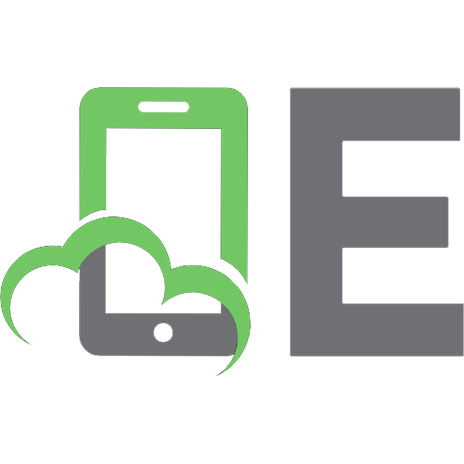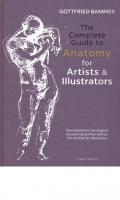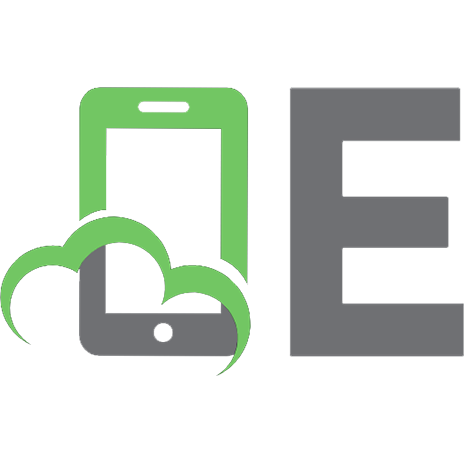Printmaking: a complete guide to materials & processes [2 ed.] 9781780671949
The impetus for this book began with an exploratory visit to In gathering the information for this book, we relied on ou
123 82 29MB
english Pages [260] Year 2015
Preface
Introduction
The Generative Matrix The Delay
Layers
The Multiple Function
Originality, Authorship, Authority PrintClassification
1 Practical Matters
SettingUpShop Solvents
Inksand Additives Paper
Registration
Proofing and Editioning Safety inthe Print Shop
2 DigitalProcesses
History
Digital Purposes DigitalBasics
InkjetBasics Photo-printmaking Basics Artistprofile—Randy Bolton
3 Screen Printing Tools and Materials
Planning the Image BasicStencils Artistprofile—David Sandlin Printing
4 Relief
Tools and Materials Matrix-making Process Wood Engraving Artistprofile—Karen Kunc Printing the Relief
Color Relief Printing Mokuhanga Beyond the Press
5 Intaglio
The Etching Process Tools and Materials Preparing the Plate
102
AOS
107 107 112
Direct (Non-acid) Platemaking Techniques Acid-based Platemaking Techniques Photo Intaglio
Photopolymer Flexographic Plates IntaglioPrinting
Artistprofle—Jo Ganter
Image TransferforMulti-plate Prints Color Intaglio Printing
Collagraph
Collagraph Materials Approaches toCollagraph Artistprofle—Weel A.Sabour PrintingtheCollagraph Plate
Lithography
The Process inBrief
Traditional Stone and Plate Lithography Creating an Image
Photolithography
Printing the Lithograph Artistprofle—Ingrid Ledent
Color Lithography
Innovations inPlanographic Printing
Monoprint
Tools and Materials
Image-making Strategies PrintingtheMonoprint
Master printerprofile—tTom Blaess Watercolor Monoprint
Hybrid Print
Combining PrintProcesses Intermedial Print Studioprofle—Tandem Press PrintCollage
Sculptural Print
10 Print + Make 225
The Matrix ZU) Reproducibility 22/ The Support and the Ink 229 Layering/Registration 231 Printadvocacy profile—Printeresting Hey! Functions 234 Community 235 Andso... 235
Troubleshooting 236 Glossary 246 Suppliers 250 Index 252 Credits &Acknowledgments 256
Recommend Papers
![Printmaking: a complete guide to materials & processes [2 ed.]
9781780671949](https://ebin.pub/img/200x200/printmaking-a-complete-guide-to-materials-amp-processes-2nbsped-9781780671949.jpg)
- Author / Uploaded
- Bill Fick
- Beth Grabowski
File loading please wait...
Citation preview
.COMPI | &
|
|
"
a)
ll Fick & Beth Grabowski Second Edition =
DIGITAL- SCREEN PRINTING - RELIEF « INTAGLIO.
-COLLAGRAPH + LITHOGRAPHY « MONOPRINT - HYBRID PRINT
PRINTMAKING
PRINTMAKING A COMPLETE GUIDE TO MATERIALS & PROCESSES Bill Fick & Beth Grabowski Second Edition
Laurence King Publishing
For Jim, Zoé, and Gray Beth Grabowski For Kristin and Josie
Bill Fick
LAURENCE KING
First published in Great Britain 2009 Second edition published in 2015 by Laurence King Publishing Ltd 361-373 City Road London EV 1LR United Kingdom Tel: +44 20 7841 6900 Fax: +44 20 7841 6910 e-mail: [email protected] www.laurenceking.com Copyright © 2009, 2015 Laurence King Publishing S. Elizabeth Grabowski and William Fick have asserted their right under the Copyright, Designs, and Patent Act 1988, to be identified as the Authors of this Work.
All rights reserved. No part of this publication may be reproduced or transmitted in any form or by any means, electronic or mechanical, including photocopy, recording or any information storage and retrieval system, without prior permission in writing from the publisher.
A catalogue record for this book is available from the British Library ISBN: 978 1 78067 194 9 Printed in China
Frontispiece: Laurie Sloan, Untitled, 2002
Contents Preface
Direct (Non-acid) Platemaking Techniques Acid-based Platemaking Techniques Photo Intaglio Photopolymer Flexographic Plates Intaglio Printing Artist profle—Jo Ganter Image Transfer for Multi-plate Prints Color Intaglio Printing
Introduction The Generative Matrix
The Delay Layers The Multiple Function
Originality, Authorship, Authority Print Classification
Collagraph Collagraph Materials Approaches to Collagraph Artist profle—Weel A. Sabour Printing the Collagraph Plate
1 Practical Matters Setting Up Shop Solvents Inks and Additives Paper Registration Proofing and Editioning Safety in the Print Shop
Lithography The Process in Brief Traditional Stone and Plate Lithography Creating an Image Photolithography Printing the Lithograph Artist profle—Ingrid Ledent Color Lithography Innovations in Planographic Printing
2 Digital Processes History Digital Purposes Digital Basics Inkjet Basics Photo-printmaking Basics Artist profile—Randy Bolton
Monoprint Tools and Materials Image-making Strategies Printing the Monoprint Master printer profile—tTom Blaess Watercolor Monoprint
3 Screen Printing Tools and Materials Planning the Image Basic Stencils Artist profile—David Sandlin Printing
Hybrid Print Combining Print Processes Intermedial Print Studio profle—Tandem Press Print Collage Sculptural Print
4 Relief Tools and Materials Matrix-making Process Wood Engraving Artist profile—Karen Kunc Printing the Relief Color Relief Printing Mokuhanga Beyond the Press
5 Intaglio The Etching Process Tools and Materials Preparing the Plate
10 Print + Make
102
AOS 107
107 112
The Matrix Reproducibility The Support and the Ink Layering/Registration Print advocacy profile—Printeresting Functions Community And so...
225 ZU) 22/ 229 231 Hey! 234 235 235
Troubleshooting 236 Glossary 246 Suppliers 250 Index 252 Credits & Acknowledgments 256
Preface The impetus for this book began with an exploratory visit to North Carolina from Lee Ripley Greenfield, of Laurence King Publishing. She was seeking a potential author for a book on printmaking and, unbeknownst to us, Lee had parallel conversations with both of us. Well, the print world is not huge, and academia is even smaller. Add to that the fact that we live in the same area and had other professional connections; it was not long before we discovered our corresponding conversations with Lee. While we were both intrigued, the task of writing a book on contemporary printmaking practices was daunting. We quickly agreed that it might be a good idea to take this on as a collaborative effort. Many times during the two years of production for the first edition of this book, we affirmed the serendipity of that initial impulse. Our own backgrounds and professional connections in printmaking as well as our own talents and areas of expertise have complemented each other quite nicely. The book is far better for our collaboration than it would ever have been if done by either of us alone. The intention of the book is to provide a survey of contemporary printmaking practice. While the emphasis is on technical information, we believe that technique serves a broader goal of art-making. Accordingly, we strove to frame technical discussion within the broader context of artistic practice that includes conceptual issues of concern to artists working in print media. Some of these ideas are specific to print and some are ideas relevant to any art-making enterprise. To that end, we made an effort to show the best of contemporary printmaking, covering a range of aesthetic approaches from abstract to representational, narrative comic-book style to the ethereal. We have included works from artists who work independently as well as images made in collaboration with master printers in contract ateliers. Artworks represented exist within the mainstream art world, but also exist outside of
the gallery or studio in non-traditional contexts. This diversity of approach confirms the idea that printmaking is a dynamic and ever-changing field. One of the benefits of the process is that we have met hundreds of fantastic artists who we had not known before. Artists included herein represent a multitude of diversities and international origins. The technical information in this book includes both timehonored practices and contemporary innovations. We give special attention to safe practices, addressing the important concern for health and safety. The many step-by-step illustrations provide an enhanced visual reference for the beginning
In gathering the information for this book, we relied on our many colleagues in the discipline. It continues to be a source of pride and appreciation to recognize the amazing community of printmakers out there who willingly and graciously share their tips and techniques. The spirit of generosity is unparalleled and we are so fortunate to be a part of it. Most of the technical demonstrations were shot in the print lab at the University of North Carolina in Chapel Hill. In addition to providing facilities, we are grateful for additional funding from the UNC Art Department and the University of North Carolina at Chapel Hill that supported many aspects of the work. With this second edition, we have continued to look at the practice of printmaking as one where technique and ideation are inextricably linked. We have expanded some of the chapters to clarify, add, and update technical information. A new, tenth chapter further explores the relationship of thinking and making by considering the affordances of printmaking as a source of creative inspiration. We have also endeavored to provide more information on safer and more sustainable practices. Since nontoxic alternatives are a rapidly growing and ever-evolving landscape, we have tried to present products and practices that are accessible worldwide, but we have undoubtedly left out some very worthy procedures and products. The production of the book with Laurence King has been a very rewarding experience. For both the first and second editions we have had the pleasure of working with extraordinary people. We are deeply grateful to Anne Townley and Zoe Antoniou, editors for the first edition, for their keen eye, spot-on advice, and supportive guidance during our introduction to the publishing world. For the second edition we owe thanks to several people: editorial manager Kara HattersleySmith for getting the ball rolling, picture manager Julia Ruxton and picture researcher Peter Kent for facilitating the permissions process with all of the new images. Enormous thanks to senior editor John Parton, who deserves special recognition for his considerable patience as we missed a few deadlines on the way to this second edition. We so appreciate your graciousness. The book is a pleasure to read because of the superb graphic design. Andrew Lindesay designed the original edition and Manisha Patel juggled many variables as she recalibrated everything for the second. We are, of course, most profoundly indebted to our families for their forbearance as we have spent countless hours at the computer. We owe you big time.
printmaker. When photographic information was insufficient,
our brilliant illustrator, Brittain Peck, created exquisite diagrams for increased clarity.
Beth Grabowski and Bill Fick
April 2014
Introduction The act of printing has always seemed to me a miracle, Just such a miracle as the growing up of a tiny seed of grain to an ear—an everyday miracle, even the greater because it happens every day. One drawing is sown on the stone or the etching plate, and a harvest is reaped from it. —Vincent van Gogh
We
deal with printed images every day. Anything that is made in a reproducible format is a print. Photocopies, rubber stamps, newspapers,
photographs,
posters,
your favorite band T-shirt, and the page from your desktop inkjet printer... these are just a few examples of prints in our everyday world. Many, if not most processes used in contemporary fine-art printmaking—typically
defined
through
the
Beth Grabowski, Cryogenic Self Portrait (fork and knife), 2005. Screen print with milk, scorched, 1X n1in (27.9 X 27.9 cm). Courtesy of the artist.
technical processes of relief, intaglio, lithogra-
This image was made by screen-printing breast milk thickened with cornstarch and then browned
phy, screen printing and, more recently, digital
using a heat gun. The image is of the artist herselfasa baby.
printing—were originally developed to serve
such particular, non-artistic functions. Of course, artists have always been opportunistic magpies of sorts and over the centuries they have adapted and repurposed processes to serve artistic endpoints. For many artists who gravitate to printmaking, there is certainly a great satisfaction ‘that comes with grappling with the technical problems of the discipline. Van Gogh's quote captures the sentiment that we printmakers come by all the time. We know from experience the magic that attends our process. When someone new to printmaking first pulls a print off the press and their face lights up with excitement, we know they are hooked.
Demanding
and
important
as they are,
however, it is limiting to reduce the concept of printmaking down to a set of technical procedures. Exploring the relationship of thinking
and making allows a re-examination of the traits that define print practice. For many practitioners, the processes and functions intrinsic to print media inform a very strategy of art-making. Considered from structural and conceptual
perspectives, the “how” and the “why” of printmaking hold many creative opportunities. So what are the core ideas of printmaking? The following pages feature some of the significant concepts that have emerged as central to the discipline.
Introduction
The Generative Matrix Fundamental to the “how” of printmaking is the concept of the generative matrix. A matrix is the plate, block, stone, stencil, screen, or other means of carrying image information that is ultimately printed onto another surface, typically paper. The process of creating the matrix is sometimes a very time-consuming procedure and often the locus of the artistic authority of the work. In most traditional practice, the artist establishes the matrix by directly drawing or carving onto the matrix material. In such instances, much of the quality of the resulting print rests in the virtuosity of the artist’s hand. Alongside the importance of the narrative or concept within the subject matter, it is the artist’s skill demonstrated in such
visual pleasures as the exquisite drawing in a lithograph, or the unique translation of the mark in linoleum carving, that conventionally provides distinction and establishes authority in a work of art. Sometimes, though, the matrix is not generated through conventional art-making practices. Matrices can be made from found materials, as is the case with some collagraphs,
Art Werger, Requiem, 2007. Mezzotint, 24 X 36 in (60.9
91.4 cm). Courtesy of the artist.
Through exquisite realistic portrayals of scenes viewed from unusual angles, Art Werger
creates a dream-like detachment from the events taking place.
or can be found themselves. Under these circumstances, a print can function like a photograph in its capacity to refer to the object printed. Like a photographic souvenir, the print taken from a physical surface stands as empirical evidence of the existence of that surface. All of the associations contained in the original are transferred to the printed form. Conversely, certain aspects of the original can be highlighted or reframed in the printed form. The latter also introduces a portability that continues to announce its linkage to the original, “reactivat(ing) the object reproduced,”' and concurrently amplifying the physical and/or temporal distance that separates the print from its source. Another advantage of the matrix is the benefit it has for serial and sequential thinking. Individual works within a series can share information contained in a common matrix. Sequentiality is literally pictured in the printed states of a matrix as it is developed. Adopting this idea with intentionality, the artist creates a visual narrative that is closely connected to the documentation of the working process. The visual traces between states are a direct consequence of repeatedly reworking the same matrix.
Pag
.
¥ 47%,Se
Wes one
e
} -
ES& 2aoe“ae —_ =
7
—_ .
£
: +s
a J
ye
2
i, ie
B
alps
"
:
7 |
ele
B
:
PS
“%
a
r
i}
Wier
iN
|
y
4
,
+4
b>
fad
ee i
4h
ee
i
]
ea
= ,;
\y
~
;
oe
:
4}
.
“Ae
eo ne
iy
4
ye
ee
eg on
rage:ne
aoa
(
1
‘4 ’t
;ae Sw
Kal
“aes E fat en
t8 ="
2 ae Pre. gow
Pt =
. *r. - * &
inns a
ep tks 7 on ee
z
We
at
ae ag WU
Z
-—
=
KO Yo iKG
9
=
NOE LOlsy | TSE CO Loy
>>
oO os Cyr
A aS ,®
So) a 6) CW ©) Gx
0 ag,
LIO OF, Q= ; Beesa ‘€, ~~
iC)
Osi ©)
}
>
aN
4
VS
\'(G)}
46
\=x\(A & Holt hs Oar —
—\—









